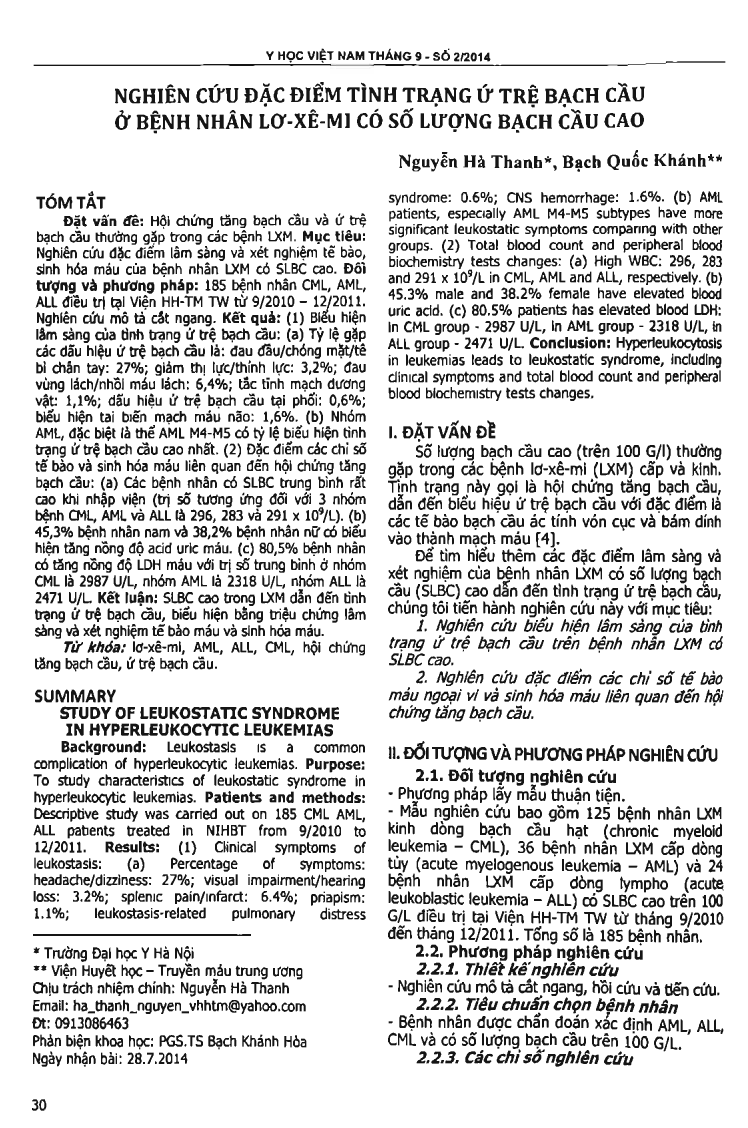
Background: Leukostasls is a common complication of hyperleukocytic leukemias. Purpose: To study characteristics of leukostatic syndrome in hyperleukocytic leukemias. Patients and methods: Descriptive study was carried out on 185 CML AML, ALL patients treated in NIHBT from 9/2010 to 12/2011. Results: (1) Clinical symptoms of leukostasis: (a) Percentage of symptoms: headache/dizziness: 27 percent; visual impairment/hearing loss: 3.2 percent; splenic pain/infarct: 6.4 percent; priapism: 1.1 percent; leukostasis-related pulmonary distress syndrome: 0.6 percent; CNS hemorrhage: 1.6 percent. (b) AML patients, especially AML M4-M5 subtypes have more significant leukostatic symptoms comparing with other groups. (2) Total blood count and peripheral blood biochemistry tests changes: (a) High WBC: 296, 283 and 291 x 1Q9/L in CML, AML and ALL, respectively. (b) 45.3 percent male and 38.2 percent female have elevated blood uric acid. (c) 80.5 percent patients has elevated blood LDH: in CML group - 2987 U/L, in AML group - 2318 U/L, in ALL group - 2471 U/L. Conclusion: Hyperleukocytosis in leukemias leads to leukostatic syndrome, including clinical symptoms and total blood count and peripheral blood biochemistry tests changes.
- Đăng nhập để gửi ý kiến
